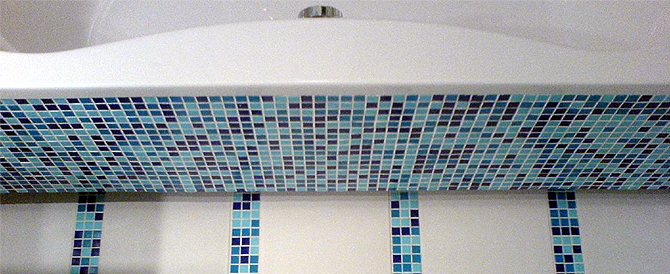Flooring is something that tends to get overlooked when planning a bathroom remodel. In addition to the flooring design working with the look of the rest of your new bathroom, the flooring material needs to be durable enough to accommodate the constant traffic and water that may come into contact with it. When choosing the right flooring for a bathroom, there’s more to keep in mind than personal style. So for today’s post we’re going to give you a brief overview of some options that take into consideration the less obvious factors homeowners deal with in their bathrooms. Be sure to check out our in-depth 2-part blog series on Kitchen & Bathroom Flooring for a more detailed look at flooring options – Part 1 | Part 2.
Here are some of the more popular choices in bathroom floor surfaces:
Carpet: Many people think that carpet isn’t a reasonable option for potentially waterlogged bathrooms. However, if this is the look and feel that you desire for your bathroom, all you need to do is make some careful choices. As long as the carpet is water-, mildew- and stain-resistant, and is made with a backing that doesn’t allow water to seep into the pad — you’re good to go! And it’s worth looking for options within those parameters. Not only does carpet provide softness and warmth underfoot, but the color and pattern options are practically limitless, too.
Ceramic Tile: Ceramic floor tile differs from wall tile in that it’s designed with more of a texture to prevent slippage, and it is designed to hold more weight than wall tile. It is typically between 1/2-inch to 3/4-inch thick, and measures anywhere from 4” x 4” to 2-feet-square. In addition to squares, other shapes are available, including octagonal and hexagonal. And mosaic tiles, which typically measure 2” square or smaller, come in pre-mounted fabric mesh sheets.
Ceramic tile is available in a wide variety of colors and patterns, which can also be complemented with colored grouts. This type of flooring is durable and hygienic, but make sure that you pay close attention to the porosity rating; it’s critical in a space with a high moisture level, such as a bathroom.
Laminate: Made of layers of materials bonded together for strength, laminate flooring is compacted under pressure to create the final product, which is then transformed into planks. In fact, the surface of a laminate plank is actually a photographic image, printed from film onto a thin decorative layer, which is in turn protected with a wear layer. The high resolution of the film results in a realistic appearance, so laminates may appear to be a variety of other materials; wood grain is one of the most popular. And because it’s durable and easy to clean, laminate flooring a logical choice for bathrooms.
Hardwood: Part of the charm of hardwood flooring is the sense of warmth that can be added to a bathroom remodel. Plus, if hardwood is your flooring of choice throughout the rest of the house, you’ll create a cohesive look. In addition, hardwood floors can be given a fresh look by applying stain or painting to complement the rest of the room’s decor.
Natural Stone: Cut into tiles, typically 12” squares or larger, stone is easy to care for and extremely durable, but does require a strong subfloor. It also has the potential to be slippery when wet, especially in a polished form. As an alternative to polished stone, the tiles can be honed (ground flat but not polished) or textured by sandblasting. It’s important to note that unpolished forms may require a sealant to prevent stains. Finally, be aware that stone floors tend to be very cold, so be prepared to find solutions for that which fit your bathroom’s design.
Vinyl: Long one of the most popular choices for bathroom applications, vinyl comes in sheets or tiles. Sheet vinyl comes in rolls that are 6- or 12-feet wide and provide a seamless look for most bathroom floors. Vinyl tiles, on the other hand, are typically 12” to 18” square and lend themselves to a variety of different patterns. Tiles are usually easier to install, and it’s simple to replace just one, if need be. On the downside, though, a vinyl tile installation has many more seams, which creates more places for germs to grow. Both options, however, are easy to clean and effectively resist stains and moisture.
Bathroom flooring is an integral part of any bathroom remodel – big or small. Choosing the best and most appropriate flooring option to fit your needs will be essential to getting the most out of your new bathroom. If you’re considering remodeling your current bathroom, be sure to contact the professionals at MDV Remodeling for a fast, free estimate!
*header image: Jos Zomerplaag/Flickr.com

